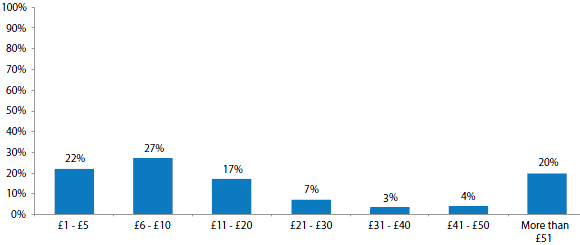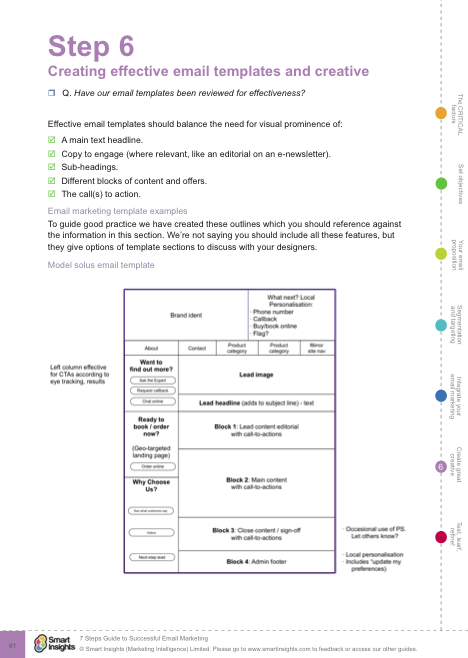Email marketers still see much room for improvement, but not all optimization needs may be critical
As Benjamin Franklin no doubt mentioned, "...nothing can be said to be certain, except death and taxes (and email ROI)."
Of the 1300+ marketers surveyed for the latest Econsultancy/Adestra Email Marketing Industry Census, 66% said email marketing delivered "excellent" or "good" ROI. Only organic SEO was reported as a better in terms of ROI.
This result continues a history of email ROI success that has outlasted every sparkly new online marketing toy.
The census results also echo the UK DMA’s recent National Email Client Report, where 89% said email marketing is "important" or "very important" to their organization. The same report found the average return on each pound spent on email was £21.48:
How much is the approximate return you get back for every pound spent on email marketing?

(Reproduced with kind permission of the UK DMA)
The census results also produced a more startling result, with 61% describing email campaign performance as "poor" or "average". In other words, marketers accept there is still vast room for improvement. And the census authors released an infographic pointing out where this improvement might be found:

I'd question the suggestion that too much time is spent on design and content per se. After all, a common complaint is that not enough care is given to subject lines. And good quality, persuasive copy alone can take significant time and effort.
The "failure" makes more sense in the context of priorities.
The census results imply marketers need to take a step back, and devote more attention to strategy and optimization, with just 19% of respondents spending over two hours a week on optimization.
Finding the time can be tough, with available marketing resources often barely covering those needed for email production. Ironically, solid email results are themselves no incentive to do anything differently.
It's the lost opportunity that matters, though. Changes to send frequencies, subject line testing, email redesigns, list building improvements, list hygiene and trigger approaches, to name but a few, all have the potential to lift results significantly.
To some extent, growing use of automated trigger campaigns removes some of the need for optimization from campaign management. In a sense they are "self-optimized" since, by definition, it's the recipient's behaviour that determines the timing and content of these emails.
An urgent optimization need emphasized by experts and the media is to redesign for the mobile email environment. While there are different schools of thought of just how to go about this (with responsive design a popular choice), there is some evidence that a major overhaul of templates may not be necessary.
Tim Watson, for example, conducted a data analysis and concluded that mobile-friendly redesigns are less about clever responsive design and more about ensuring a tighter content focus with stronger headlines and calls to action. He suggests:
"A responsive design is just a new design and any uplift seen is not because of design for mobile but simply designing a better performing template."

Recommended Guide: 7 Steps to Email marketing
Updated for 2013 by Email marketing consultant Tim Watson, this guide helps you review and improve all email marketing activities from communications strategy to email template design.
Download our 7 Steps guide to Email marketing.
t









